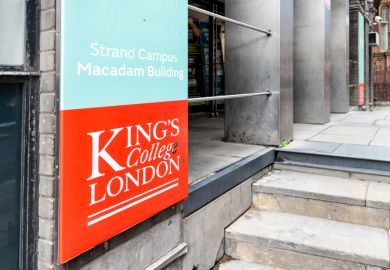Australia’s medical research funding agency is mulling gender quotas to remedy inequitable outcomes from its largest grants scheme, but has cautioned that they could have the opposite of the desired effect.
In a detailed analysis, National Health and Medical Research Council (NHMRC) chief executive Anne Kelso outlines the possible unintended consequences if predetermined shares of Investigator Grants – which constitute about 40 per cent of the agency’s competitively allocated funding – were quarantined for women.
It could steer senior male researchers into other grant schemes, increasing gender disparities elsewhere. Broadly applied quotas could also undermine female success in the junior researcher ranks, where women tend to win more funding than men.
Creating separate grant budgets for men and women could likewise limit junior women’s opportunities while artificially inflating female success rates at the most senior levels, where about 80 per cent of applications come from men.
Requiring institutions to submit equal numbers of applications from each gender could scupper men’s opportunities if they worked in places with few female researchers. And while the council could mandate equal numbers of male and female peer reviewers – an approach that was “assumed to foster equity in outcomes” – this could overburden female professors.
Resolving the issue “is not straightforward [and] there may not be a single answer”, Professor Kelso writes. “The challenge…is to find a path that provides the greatest possible opportunity for women…without risking a significant loss of experience and expertise.
“Any significant change to the structure of the scheme must be based on careful analysis and modelling. Without additional funding, any substantial intervention to address the predominance of men at [the most senior levels] would have significant ramifications – from pushing highly competitive applicants into other grant schemes to the potential loss of senior leaders and mentors.”
Professor Kelso says gender inequities in the NHMRC’s overall allocations had shrunk in the past decade. Women’s 32 per cent share of funding in 2012 had risen to about 45 per cent by 2021, thanks to new measures – such as a policy to fund “near-miss” applications from female chief investigators – as well as broader changes in Australia’s health workforce.
But inequity remained firmly entrenched in the Investigator Grants programme, which was formed in 2019 from the merging of seven fellowship and research support schemes, with men lodging most applications and attracting most funding.
“The single biggest factor…is the higher proportion of male applicants at the most senior levels,” Professor Kelso explains. “This is not a surprising finding. It has long been the case that most senior positions in the health and medical research sector, as in many other professions, have been held by men.”
The NHMRC has scheduled two webinars to discuss Professor Kelso’s report.
Similar issues have dogged European research agencies, with quotas proposed and sometimes abandoned. Germany introduced gender targets for universities’ internal committees, to combat unequal hiring practices, but found that the approach was limiting women’s research careers by saddling them with more administrative work.
A 2019 French analysis found that gender quotas on recruitment committees had backfired, with fewer women hired – possibly because men disliked the idea.
The Covid-19 pandemic’s disproportionate impacts on female academics has fostered enthusiasm for gender-based measures in Asia. A 2021 statement by Chinese authorities said women should be given priority in research funding and senior appointments, while some universities in Japan and Hong Kong have introduced targets and quotas for female academic leadership.
Register to continue
Why register?
- Registration is free and only takes a moment
- Once registered, you can read 3 articles a month
- Sign up for our newsletter
Subscribe
Or subscribe for unlimited access to:
- Unlimited access to news, views, insights & reviews
- Digital editions
- Digital access to THE’s university and college rankings analysis
Already registered or a current subscriber? Login








